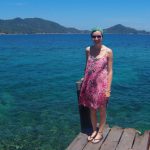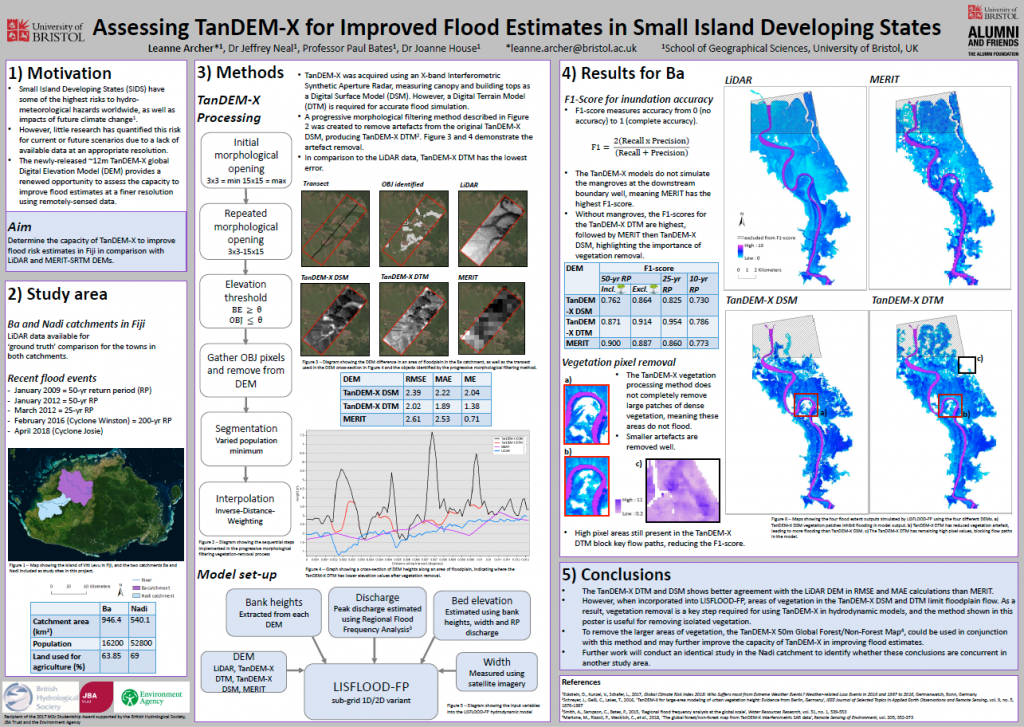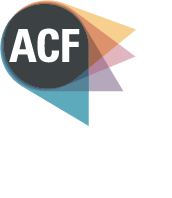Improving Flood Estimates in Small Island Developing States

Leanne Archer talks about her research into assessing flood risk in Small Island Developing States and the experience of presenting a poster at the 2018 European Geosciences Union General Assembly (EGU). Leanne received a Studentship Award in 2017 and went on to study for a Masters by Research (MScR) at the University of Bristol.
“Small Island Developing States (SIDS) are some of the most at-risk countries in the world to flooding from storm surges, cyclones and extreme rainfall, and improved flood inundation modelling is urgently needed. Limited data availability in these areas means modelling has thus far relied on global Digital Elevation Model (DEM) products such as the Shuttle Radar Topography Mission (SRTM), which are coarse in resolution with poorer accuracy in comparison to expensive datasets such as LiDAR. However, the recent release of the TanDEM-X global DEM at 12.5m resolution provides a renewed opportunity to investigate whether this higher-resolution global DEM can improve flood estimates in SIDS.
In April 2018, I attended the EGU General Assembly 2018 as a Masters by Research student, presenting a poster on the research I am conducting to determine whether TanDEM-X can be used to improve flood estimates in Fiji in comparison to the error-reduced MERIT SRTM. My poster summarises the work I have conducted over the last 6 months, applying a method to process the vegetation artefact present in TanDEM-X. The resultant Digital Terrain Model was then input into the LISFLOOD-FP hydrodynamic model to provide flood extents for a particular return period flood event.
Presenting my poster at EGU provided me with a great opportunity to discuss my research with other academics and gain new insights into how my research could be improved and applied. Throughout the remainder of the week, I attended many talks and poster sessions, covering topics on hydrology, remote sensing, disaster risk and climate change, broadening my insight into the current research landscape within hydrology and earth sciences. Overall, attending EGU was an invaluable experience that has given me confidence to write and publish my findings. It has also strengthened my aspiration of applying to PhD positions next year, with the hope of continuing to expand my knowledge in this field and contribute to improved flood modelling in SIDS.”


